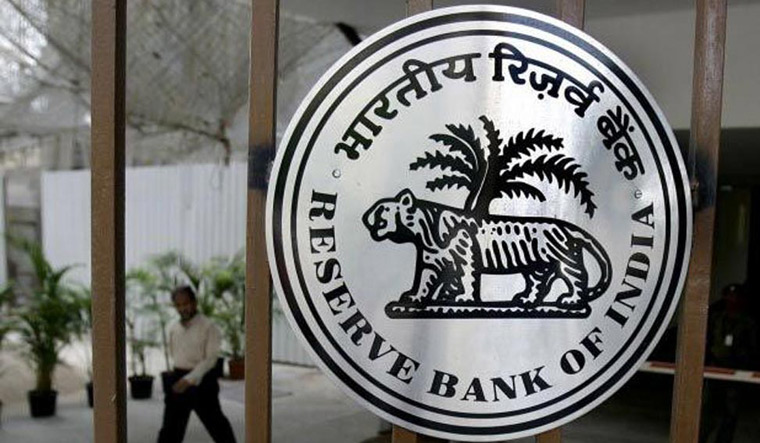The Reserve Bank of India (RBI) expectedly left the benchmark repo rate unchanged at 4 per cent on Friday as it focuses clearly on reviving an economy that has been hit hard by the COVID-19 pandemic.
Analysts expect the central bank’s focus over the next few quarters is likely to remain on helping the economy. However, any further interest rate cut is unlikely, they added. While there are near-term inflationary concerns, it is likely to average around 5 per cent, which is in the RBI’s target of 4 per cent, plus or minus 2 per cent.
“(The) GDP growth estimate for FY2022 was revised down to 9.5 per cent, broadly in line with consensus estimates. We expect GDP growth at 9 per cent. Estimates for average inflation was marginally revised higher to 5.1 per cent. We estimate average CPI (consumer price index) inflation at 4.9 per cent. It remains well within the RBI’s comfort levels given the growth concerns. Overall, policy decisions were as expected and we expect the RBI to remain steady with its policy rate, stance, and liquidity management over at least the next couple of policy meetings,” said Suvodeep Rakshit, vice-president and senior economist at Kotak Institutional Equities.
All the members of the RBI monetary policy voted unanimously to not just leave the repo rate unchanged, but also to continue the accommodative stance as long as necessary.
“The stance is as dovish as can be even in the background of inflationary concerns. This is, of course, because the MPC now accords highest priority to revival of growth and attributes inflationary concerns primarily to supply shocks, which are expected to dissipate,” said Beksy Kuriakose, head–fixed income, Principal Asset Management.
A significant announcement by the RBI, said Kuriakose, was to conduct open market operations in state development loans (SDL) for the first time. She said this would help support the expected increase in SDL supply this year due to tax revenue slippages on account of COVID-19 and growth slowdown.
The RBI has also announced G-SAP 2.0 (government securities acquisition programme), whereby the central bank will conduct secondary market purchases to the tune of Rs 1.20 lakh crore in the second quarter.
“Given that the RBI has already exhausted the monetary policy options to support growth, any further reduction in policy rates is unlikely. RBI will have to continue its support to the bond markets to keep overall interest rates low for as long as possible. Continuation of the G-SAP programme should bode well for the bond markets in near term,” said Pankaj Pathak, fund manager—fixed income, Quantum Mutual Fund.
The central bank also announced several other measures, including a separate Rs 15,000 crore on-tap liquidity window for contact-intensive sectors like hotels and travel firms, which will provide a “fresh lease of life” to sectors worst affected by the pandemic, said Anshuman Panwar, co-founder of Creditas Solutions.
“RBI’s move to expand the coverage of borrowers under the Resolution Framework 2.0 by enhancing the overall exposure from Rs 25 crore to Rs 50 crore is expected to help a larger number of micro, small and medium enterprises, non-MSMEs and individuals who have taken business loans and this will reduce the delinquency rates. This is a huge relief to the small business owners reeling under the stress caused due to the second wave of COVID,” he added.
also read
- IMF raises India's growth projection to 6.8 pc; growth in China likely to slow to 4.6 pc
- Normal monsoon predicted for 2024. Is it enough to bring down inflation?
- Climate change poses challenges for monetary policy, says RBI report
- RBI governor calls for for greater participation of banks in rupee derivatives in India, abroad
Abheek Barua, chief economist at HDFC Bank, also believes the liquidity support for contact-intensive sectors is likely to aid credit flow to these sectors. But a more equitable distribution of credit is likely to be contingent on whether the assessment of risks is in line with the markup over reverse repo provided by RBI to banks.
“Therefore, some form of credit guarantee is, perhaps, required for de-risking the system,” he said.
Indranil Pan, chief economist at YES Bank, too, feels any further interest rate cuts are unlikely and therefore, the RBI’s endeavour to keep the system fluid with adequate liquidity and targeted rescue operations for the most stressed sectors of the economy.
“Over the current financial year, the RBI will not have any leeway to change its interest rates to provide support to the economy. Instead, it will do whatever is necessary to push credit and liquidity to the stressed areas of the economy so as to prevent erosion of the supply chains in the economy,” noted Pan.





